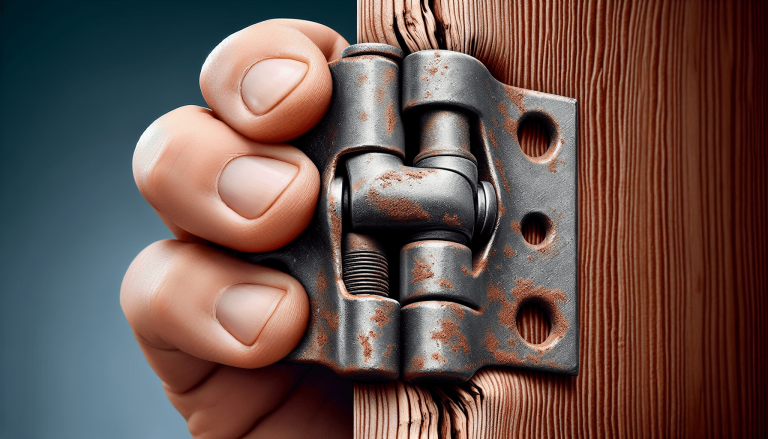Why Have My Joints Suddenly Started Aching?
You’ve been going about your daily life, when all of a sudden, your joints begin to ache with a newfound intensity. You start to wonder what could be causing this unwelcome discomfort. “Why Have My Joints Suddenly Started Aching?” delves into the possible reasons behind these sudden pains, exploring everything from common causes like arthritis and overuse to more unexpected factors such as diet and underlying illnesses. This helpful guide will steer you through understanding the possible causes and offer practical tips on how to address and alleviate the pain.
Have you recently wondered, “Why have my joints suddenly started aching?” It can be quite disconcerting when your body begins to ache for no apparent reason. Waking up to stiff knees or experiencing sudden elbow pain while you’re going about your day can feel like an unwelcome surprise. But don’t worry—you’re not alone, and there are explanations for what’s happening to you.
Understanding Joint Pain
joint pain can be described as discomfort, aches, or soreness in any of the body’s joints. It is a common complaint and can occur at any age, though it becomes increasingly common as one grows older.
What Are Joints?
Before diving into the reasons behind sudden joint pain, it’s essential to understand what joints are. Joints are the parts of your skeletal system where two or more bones meet. They provide support and facilitate movement. Examples of joints include knee joints, elbow joints, shoulder joints, and so forth.
Types of Joint Pain
Not all joint pain is created equal. Here are some types you might experience:
| Type of Joint Pain | Description |
|---|---|
| Acute | Sudden and severe pain that comes on quickly. |
| Chronic | Long-standing pain that persists over time. |
| Inflammatory | Pain that comes from inflammation, often associated with conditions like arthritis. |
| Non-inflammatory | Pain not caused by inflammation, sometimes due to mechanical issues such as an injury. |
Common Causes of Sudden Joint Pain
Several different factors could be behind the sudden aching of your joints. Let’s look at some of the most common causes.
Injury
An obvious cause of sudden joint pain is injury. Perhaps you twisted your knee while jogging or strained your wrist lifting something heavy. These injuries can lead to acute inflammation and pain. Even if it didn’t hurt at the time, it can manifest later as an aching sensation.
Overuse
Repetitive movements can cause stress on your joints, leading to pain. Overuse injuries are commonly seen in athletes and people who perform repetitive tasks at work. If you’ve recently taken up a new hobby or switched your workout routine, this might be why your joints are aching.
Infection
Infections can sometimes spread to the joints and cause sudden pain. Conditions like septic arthritis are rare but very serious, requiring immediate medical attention. If you experience fever, redness, stiffness, and pain in a joint, you should see a doctor immediately.
Arthritis
Arthritis is a broad term that encompasses various types of joint inflammation. Two common types that can cause sudden joint pain are:
Osteoarthritis
This is the most common form of arthritis. It involves the gradual wear and tear of cartilage in your joints. While it’s usually a slow-developing condition, some people report sudden intensification of symptoms.
Rheumatoid Arthritis
This is an autoimmune condition where your immune system mistakenly attacks your joints. Sudden flare-ups are typical in rheumatoid arthritis, and these can cause intense joint pain.
Gout
Gout is a form of arthritis caused by crystallized uric acid accumulating in your joints. It often strikes suddenly and severely, commonly affecting the big toe but can also target other joints. Diet, genetics, and underlying health conditions can all contribute to gout.
Lifestyle Factors
If you have suddenly started experiencing joint pain, evaluate your lifestyle. Factors such as diet, sleep, ergonomics at your workstation, and even your emotional well-being can influence how your body feels.
Diet
A diet high in processed foods, sugars, and unhealthy fats can lead to inflammation, including in your joints. Some people are sensitive to particular foods that can exacerbate inflammation and joint pain.
Lack of Sleep
Poor sleep affects your body’s ability to repair itself and manage inflammation. If you’ve been skimping on rest, it might manifest as joint pain.
Stress
High stress levels can cause muscles to tighten, leading to joint strain and pain. Learning to manage stress through practices like mindfulness and exercise can help alleviate this.
Environmental Factors
Weather changes can also influence joint pain. Many people report that their joints ache more in cold, damp weather. However, the precise mechanisms behind this are not entirely understood.

Self-Management and Treatment Options
If your joints have suddenly started aching and the pain is mild to moderate, several self-care strategies can help you manage it.
Over-the-counter Medications
Pain relievers such as ibuprofen or acetaminophen can help reduce joint pain. Nonsteroidal anti-inflammatory drugs (NSAIDs) are also effective in addressing swelling and inflammation.
Rest and Ice
Give your joints a break. Rest is crucial for recovery. Applying ice packs for 20 minutes several times a day can also reduce inflammation.
Stretching and Strengthening Exercises
Gentle stretching exercises can help keep your joints flexible. Strengthening the muscles around your joints can provide more stability and reduce pain over time.
Sample Stretching Routine:
| Exercise | Description | Duration |
|---|---|---|
| Hamstring Stretch | Sit on the ground with one leg extended and the other bent. Reach toward the toes of your extended leg. | 30 seconds each side |
| Shoulder Stretch | Cross one arm over your chest and hold it with your other arm. Switch arms. | 30 seconds each arm |
| Ankle Circles | Sit or lie down and rotate your ankles in circles to the left and right. | 1 minute each ankle |
Diet and Supplements
Eating a balanced diet rich in anti-inflammatory foods such as fruits, vegetables, nuts, and fish can help your joints. Supplements like omega-3 fatty acids, glucosamine, and chondroitin may also be beneficial.
Ergonomic Adjustments
Evaluate your work and living environments. Ensure your seating posture is correct and that your workstation is ergonomically sound.
Stress Management Techniques
Practices like yoga, meditation, and even regular exercise can help manage stress, which in turn may reduce joint pain.
When to See a Doctor
While many causes of sudden joint pain can be managed at home, some situations warrant professional medical attention.
Severe Pain
If the pain is excruciating and does not subside with over-the-counter medications or rest, it could be a sign of a more serious condition.
Swelling and Redness
Sudden, severe swelling and redness around a joint can indicate an infection or other inflammatory condition that needs medical intervention.
Fever
If you experience fever along with joint pain, it could be a sign of an infection that requires antibiotics.
Persistent Pain
If your joint pain persists for more than a few weeks, it’s advisable to consult a healthcare professional for a thorough evaluation.

Diagnostic Tests
When you consult a doctor, they may perform several diagnostic tests to determine the root cause of your joint pain. These may include:
Blood Tests
Blood tests can identify markers of inflammation or infection, guiding the diagnosis toward conditions like rheumatoid arthritis or septic arthritis.
Imaging Tests
X-rays, MRI scans, and ultrasound can provide detailed images of your joints, revealing issues such as osteoarthritis, fractures, or other abnormalities.
Joint Fluid Analysis
In cases of suspected infection or gout, your doctor may take a sample of joint fluid to examine for crystals, bacteria, or inflammatory markers.
Specialized Treatments
Depending on the diagnosis, you might be prescribed specific treatments that go beyond home care.
Physical Therapy
Physical therapists can guide you through exercises designed to strengthen muscles, improve flexibility, and reduce joint pain. Tailored exercise programs can be particularly beneficial for long-term management.
Prescription Medications
For conditions like rheumatoid arthritis or severe osteoarthritis, prescription medications such as corticosteroids or disease-modifying antirheumatic drugs (DMARDs) may be necessary.
Injections
Corticosteroid injections can offer quick, although temporary, relief from inflammation and pain in your joints. Hyaluronic acid injections are another option used primarily for knee osteoarthritis.
Surgery
In severe cases where nonsurgical treatments fail to provide relief, surgical options like joint repair, replacement, or reconstruction might be considered.
Preventing Future Joint Pain
Preventing joint pain before it starts, or preventing its recurrence, involves maintaining a healthy lifestyle and being mindful of risk factors.
Regular Exercise
Engaging in regular, low-impact exercises such as swimming, walking, and cycling can help keep your joints flexible and strong. Always warm up properly and avoid over-exertion.
Balanced Diet
Eating a diet that includes plenty of fruits, vegetables, lean proteins, and whole grains can keep inflammation at bay. Avoid refined sugars and saturated fats as much as possible.
Weight Management
Excessive weight places extra stress on your joints, especially weight-bearing ones like your knees and hips. Maintaining a healthy weight can significantly reduce your risk of joint pain.
Proper Ergonomics
Whether at work or home, make sure your environment supports good posture and ergonomics. Use chairs and desks that promote correct body alignment and minimize strain.
Stress Management
As we discussed, stress can contribute to muscle tension and joint pain. Regularly practice stress-relief techniques such as meditation, yoga, or even simple breathing exercises.
Conclusion
Experiencing sudden joint pain can be alarming, but understanding the potential causes and remedies can empower you to manage and mitigate the issue effectively. From lifestyle changes to medical treatments, there are numerous ways to alleviate your discomfort and improve your joint health.
If your joint pain is persistent, severe, or accompanied by other worrying symptoms, it’s crucial to seek medical advice. Diagnosing the underlying cause is the first step towards effective treatment and long-term relief.
By adopting a holistic approach that involves physical activity, a balanced diet, ergonomic adjustments, and stress management, you can help maintain the health and flexibility of your joints for years to come. So the next time you find yourself asking, “Why have my joints suddenly started aching?” you’ll not only understand the possible reasons but also know what steps to take to feel better.
Additional Resources

It starts with a little bit of soreness…in your knees, hips, later your back.
You brush it off. You keep thinking “It’s probably nothing”. Until your joints get worse and stiffer day by day.
Suddenly the pain is real. Little by little it makes you a living mess. Sitting down or getting up is an extreme task, loosening your grip, controlling your motions is a nightmare and before you know it…
Boom! You’re a prisoner in your own body.
There is a fast and simple hack to restore joint health and regain full control over movements without any pain or sudden stiffness.
More than 3,988 cases of chronic pain, mild and severe arthritis have reported that their pain has gone down by 87%, the swelling and stiffness are completely gone and their mobility is back to normal.
>>> It only takes 30 seconds to eliminate joint pain in less than 15 minutes.






